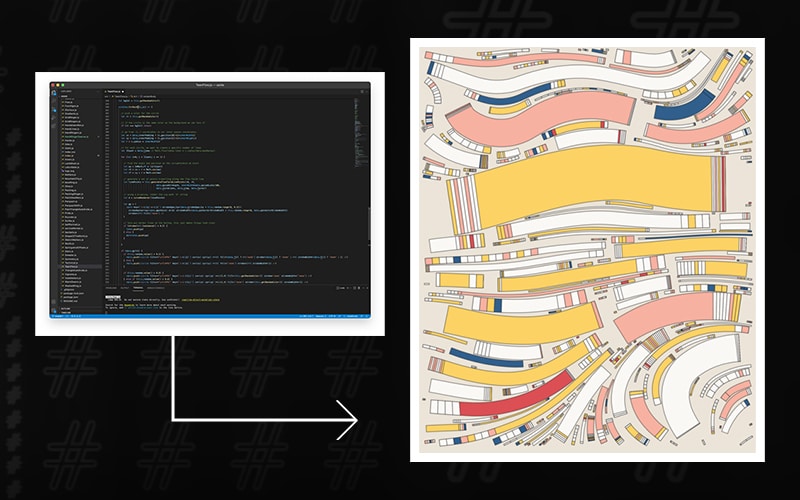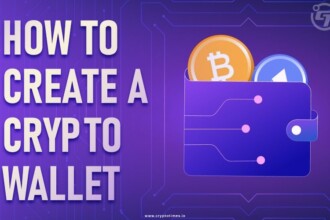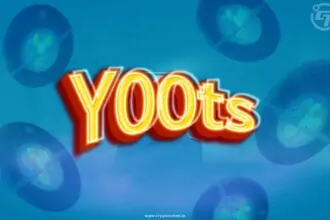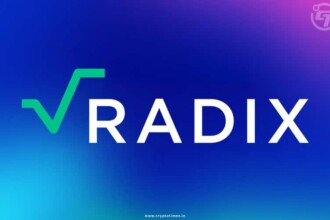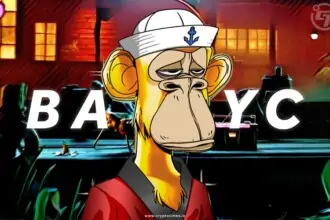The popularity of NFTs has exploded in the last year. These digital artworks are now worth millions of dollars to artists and developers, although some are more valuable than others. But have you heard about creating them using algorithms? One such NFTs are generative art NFTs and Art Blocks take the pride in creating them.
Generative art in itself is a fundamental medium that challenges our concept of art creation and value, offering endless possibilities of automated artworks with every run of the program.
In the past, generative art was not widely accepted, described as not being “real art” and uninteresting. The NFT space is changing how we perceive and value digital art.
Few of the famous generative art NFT creations are: Ringers, Scrappy squirrels, Fidenza etc.
Although, generative art can be a daunting subject because it appears to include a lot of math, and art is difficult enough but in reality it’s nothing like that. Anyone can create these absolutely amazing creations. So, what is a generative art?
What are generative arts?
Generative art is a piece of code executed to create randomly generated artwork. It is majorly influenced by pop art that follows geometric patterns.
The Ethereum NFT Artspace is now dominated by Generative Art, which is thriving. Rather than spending days or even months investigating a single idea, generative code artists use computers to produce thousands of ideas in just a few seconds.
These artists use the power of modern technology to invent such new beautiful creations. In art and design, this strategy greatly simplifies the exploratory phase and frequently results in startling and profound new concepts.
To begin, you must first establish rules that define the parameters of the creation process. Then the guidelines are followed by a machine, which creates new works on your behalf.
How did generative arts come into reality?
These arts have been in existence since the early 1960s that include geometric abstract art, robot painting, computer graphics, auto drawn photographs, music, and randomized poetry, among other things.
Engineer and artist Aaron Penne has been working on generative art since 2018 and is currently selling algorithms as NFTs. Sotheby’s and Christie’s have both showcased his work.
He created a series of paintings called “Apparitions” by using computer algorithms to create colorful layers of repeated lines that create dynamic movement.
An 1893 painting by Levi Walter Yaggy influenced this. He used the generative art NFT platform Art Blocks to make 1500 paintings by introducing a hand-picked assortment of 20 colors.
Every secondary market sale of this collection now pays the artist 5% royalties. Based on the 2.8K Ether volume traded, the project paid the artists roughly USD 600,000.
How NFTs led to the development of Generative Arts?
Generative art has been criticized in the past for not being “real art” and for being boring. Fortunately, NFTs are transforming the way we think about and value digital art.
The NFT not only ensures the validity of unique art by creating artworks, but it also embeds the art in the token, increasing its uniqueness and thus its value.
Art Blocks is one of the most famous NFT commercial projects in the NFT space, promoting generative art production. Crypto punks were popular on Ethereum in 2017 before the Art Blocks.
On Art Blocks, a user known as Vincent Van Dough paid 600,000 USD for three works of generative art in August 2021.
Since NFT adds value to the artist by giving a vast global market, generative art has found a perfect synergy and a launchpad in the decentralized marketplace.
Process of creating generative arts
In simple words Generative Art is a sort of digital art created randomly, either by algorithms or by autonomous machines. New Media art styles are referred to as Coding Art, Interactive Art, and Generative Design.
Python is one of the best generative art software. Although there are also other variety of programming languages like R that can be used to create generative art.
Moreover, p5.js is a wonderful place to start if anyone is comfortable with JavaScript. It aims to “make coding accessible to artists, designers, educators, and newcomers.” It’s a Canvas API wrapper that simplifies a lot of the math and it focuses mostly on the art of drawing.
How generative arts could change the future of NFTs and Metaverse?
Similarly, to how NFT may have multiple art forms, generative art can have various modes of expression, and generative encrypted art can be “played” with.
Consider the case of Art Blocks. Unlike the standard number of avatar NFTs, which is usually fixed at 10,000, the largest limit of a series of works on Art Blocks is from one thousand to several hundred.
Not just this, in addition, people can spend as much time as they like exploring a particular field based on their own preferences. Artists, for example, can experiment not only with visual pictures but also with video and audio.
To put it another way, generative art is not only entertaining, but it also provides an infinite amount of exploration space and can help to empower the concept of the meta-universe. Additionally, the name of Facebook has just been changed to Meta.
Mark Zuckerberg, the CEO of Metaverse Upstart, wrote a “Founder’s Letter” detailing the company’s new goal for Metaverse creation. “Our mission has not changed, and it is still to bring people together,” he stated at the same time.
This might stimulate worldwide investor interest in the meta-universe concept, and the addition of generative art could increase work efficiency and make the meta-universe environment more vibrant.
Why these NFT art pieces have become so popular?
It is inspired by themes from twentieth-century art, and artists play an important role in its development. The method is comparable to that used in traditional art.
Unlike traditional artists like Raf Grassetti and Mike Winkelmann also known as Beeple who created their NFT arts either through their paintings or sculptures, these generative arts are being created with computer algorithms, and even the artists and unaware of the final art.
On-demand digital content is created by AI generative art platforms and stored immutably on the Ethereum blockchain.
Investors and collectors can select their preferred style, pay in cryptocurrency for the task, and an algorithm generates a randomly generated version of the content that is sent to the collector’s Ethereum address. The NFT that results could be a static image, 3D model, or interactive experience that is only available in the collector’s crypto wallet.
Just in August, Fidenza, a collection of 999 colorful unique NFT arts that are created using a creative algorithm and sold for over 37,000 ETH as part of the generative NFT art collection on ArtBlocks.
Like Fidenza, in 2021, Dmitri Cherniak launched the Ringers series on Art Blocks. The collection comprised 1,000 one-of-a-kind NFTs, each coined in a limited edition. After the sale started these pieces were sold in just 20 minutes at just 0.1 ETH each, but later when people started having interest in generative arts, its price gradually sky-rocketed. The Ringers #109 is one of the most expensive NFT, sold for $7.1 million.
What can we learn from this?
So far we have seen traditional art NFTs getting sold in millions, but now with increased craze of NFTs, gradually randomness in NFTs are preferred. Generative NFTs like Ringers and Fidenza being sold in millions, collectors are more bent towards these algorithmically created NFTs.
Coding affects not only our buildings, but also our relationships, communication, and other elements of our lives, and our art must adapt to societal developments.
Additionally, with the rise of the NFT and the imminent takeover of the globe by the Metaverse, it appears that generative art has a bright future.


